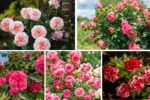When it comes to creating a pollinator-friendly garden, few plants are as reliable and beneficial as goldenrod. Known for their tall, vibrant yellow flower spikes, goldenrod plants not only brighten up late summer and fall landscapes but also serve as an essential nectar source for bees, butterflies, and other beneficial insects. Often misunderstood as a cause of allergies (which is actually due to ragweed), goldenrod is a hardy, low-maintenance native plant that’s a magnet for pollinators.
Let’s explore 10 gorgeous goldenrod varieties you can grow to turn your garden into a lively haven for buzzing visitors.
1. Solidago canadensis (Canada Goldenrod)

Canada Goldenrod is one of the most common and vigorous goldenrod species in North America. Known for its tall, arching stems and feathery clusters of tiny golden-yellow flowers, this plant creates a spectacular display from late summer through fall. It’s a powerhouse for pollinators, attracting native bees, honeybees, butterflies, and beneficial wasps. Canada Goldenrod thrives in full sun and poor to average soil, making it a perfect low-maintenance addition to naturalized gardens and meadows.
2. Solidago rugosa (Rough Goldenrod)
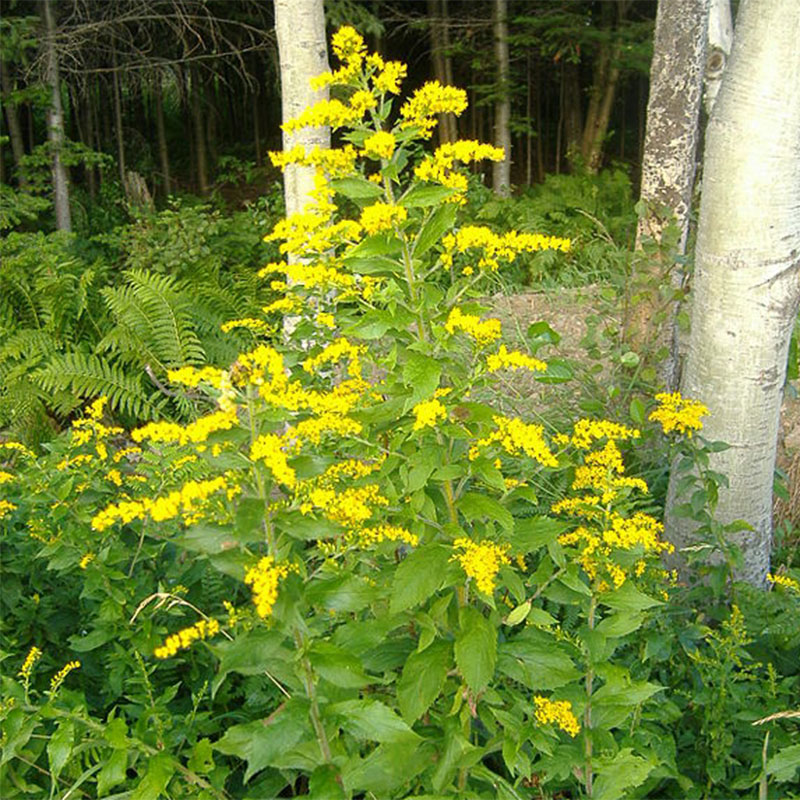
Rough Goldenrod stands out with its distinctive, coarse-textured leaves and dense flower spikes. Blooming from late summer into early fall, its rich golden flowers provide a critical nectar source for migrating Monarch butterflies and numerous native bee species. It’s also a larval host for several moth species. This plant loves moist soils and is often found in wetlands or along stream banks, though it also adapts well to garden conditions if watered regularly.
3. Solidago odora (Sweet Goldenrod)
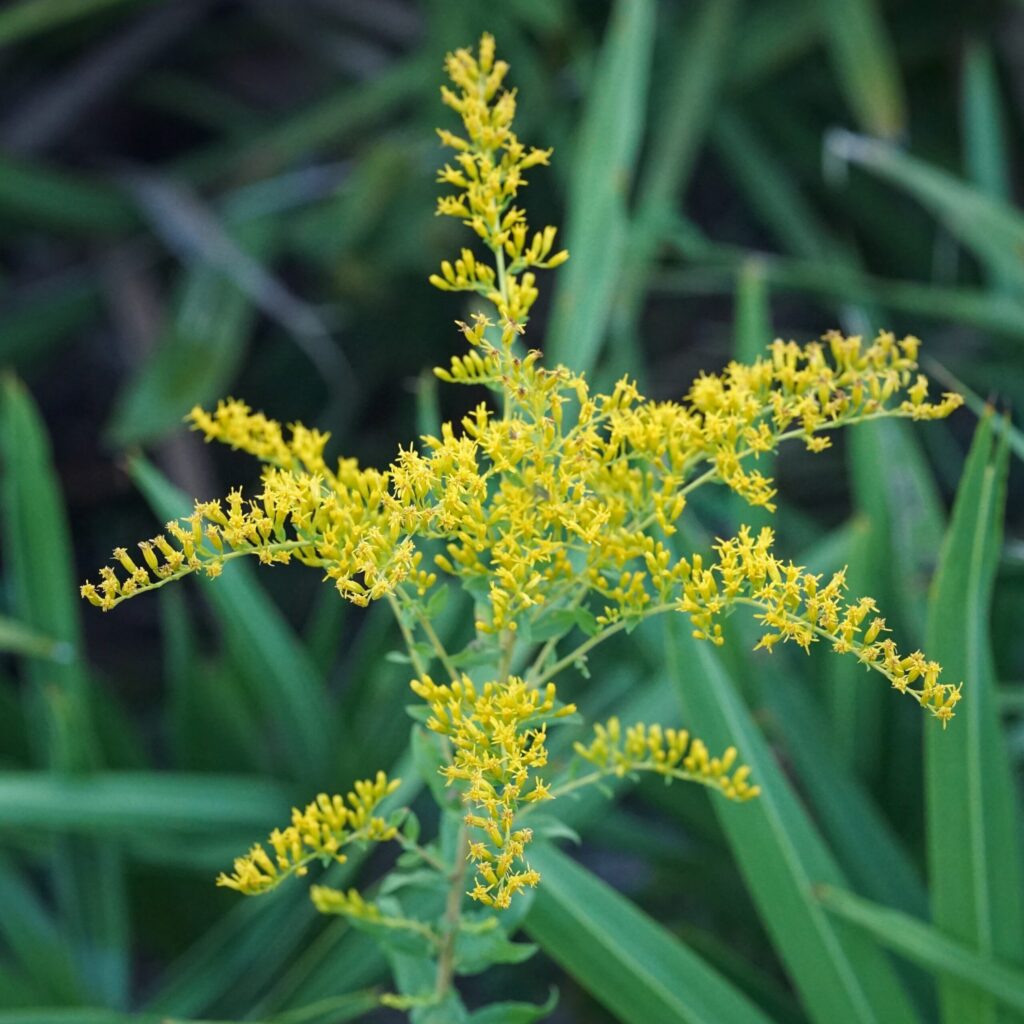
Also known as Anise-Scented Goldenrod, Solidago odora offers not only beautiful golden blooms but also aromatic leaves that release a sweet, licorice-like scent when crushed. This plant is a favorite of pollinators, particularly small native bees and butterflies like the Pearl Crescent. Sweet Goldenrod prefers well-drained soil and full sun, making it ideal for dry slopes, prairies, or open woodland gardens. Its pleasing fragrance and wildlife value make it a standout addition to pollinator plantings.
4. Solidago speciosa (Showy Goldenrod)
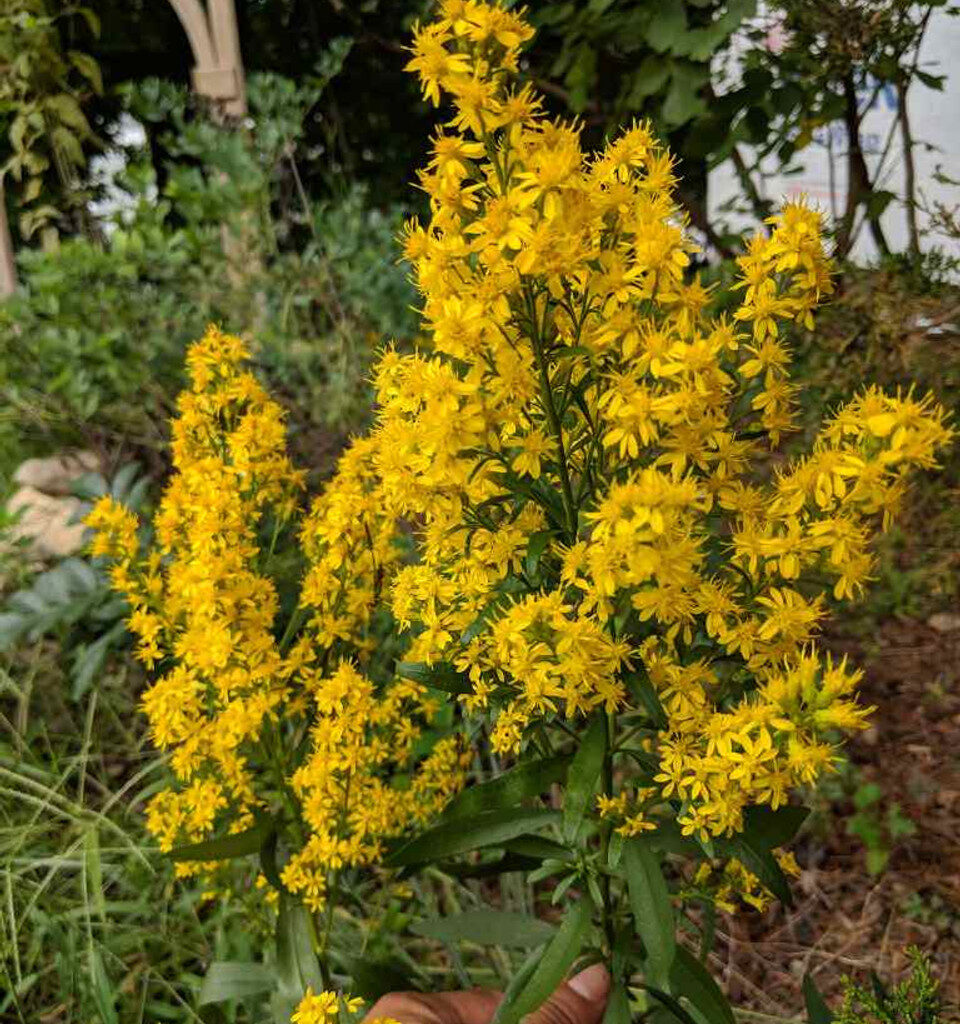
True to its name, Showy Goldenrod produces some of the most vibrant, eye-catching flower plumes in the goldenrod family. Its upright, unbranched stems bear dense, brilliant golden spikes that bloom from late summer into fall. This species is particularly attractive to Monarchs and Painted Lady butterflies, as well as long-tongued bees. Showy Goldenrod tolerates a wide range of soils, including sandy or rocky conditions, making it an excellent choice for pollinator gardens, borders, or naturalized areas.
5. Solidago gigantea (Giant Goldenrod)
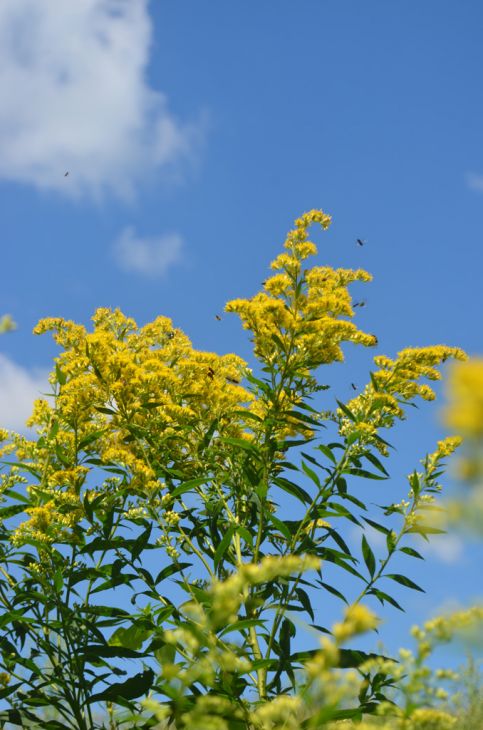
Giant Goldenrod lives up to its name, growing up to 6 feet tall in ideal conditions. Its towering form and abundant flower sprays attract a diverse range of pollinators, including bumblebees, solitary bees, butterflies, and beneficial beetles. Blooming from late summer into fall, it provides essential late-season nectar when few other plants are in flower. This hardy plant thrives in moist to average soil and can naturalize beautifully along fences, in wildflower meadows, or beside ponds.
6. Solidago nemoralis (Gray Goldenrod)
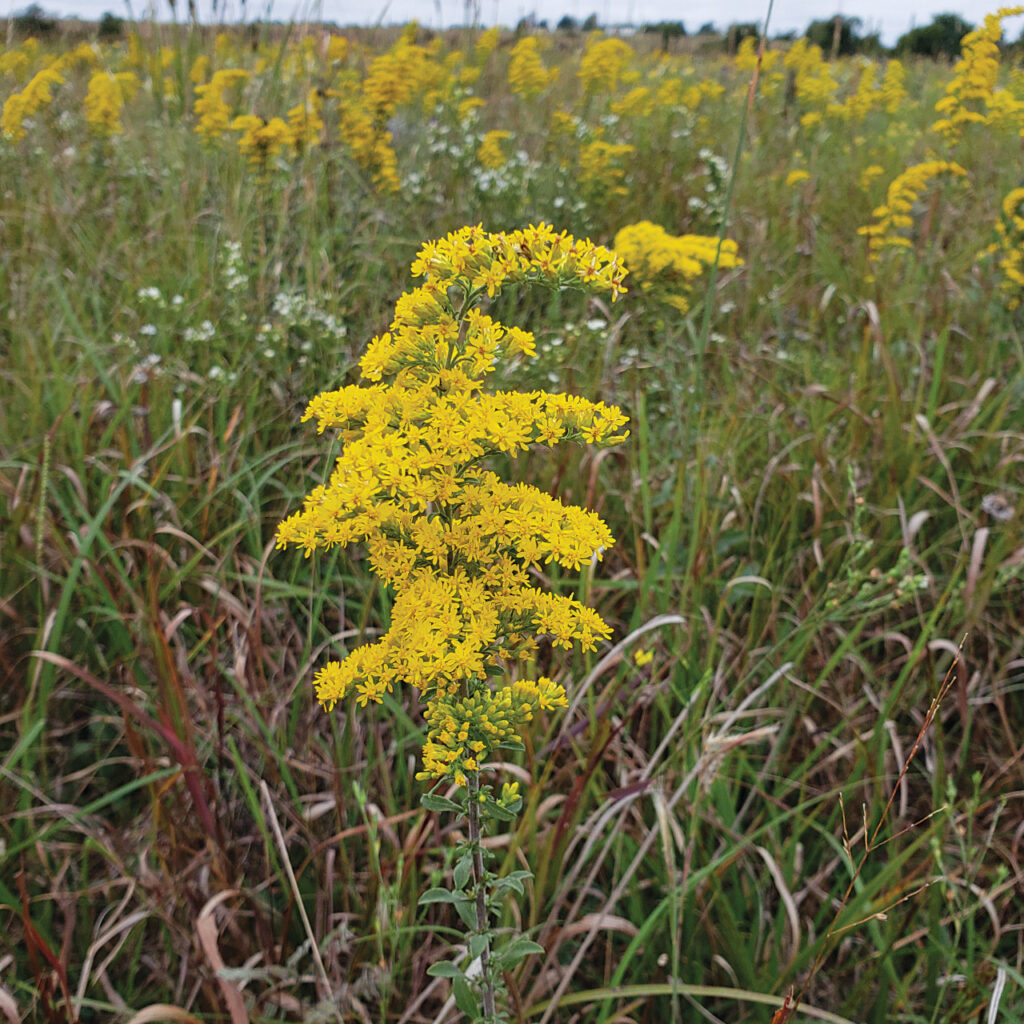
One of the shorter goldenrod species, Gray Goldenrod reaches about 1 to 3 feet in height and features slender, arching flower clusters that bloom later than many other varieties. Its grayish foliage and smaller size make it perfect for smaller garden spaces or rock gardens. Gray Goldenrod is a vital nectar source for fall pollinators, especially small native bees and butterflies. It’s drought-tolerant and thrives in dry, sandy, or rocky soils, making it a resilient choice for challenging sites.
7. Solidago bicolor (White Goldenrod)
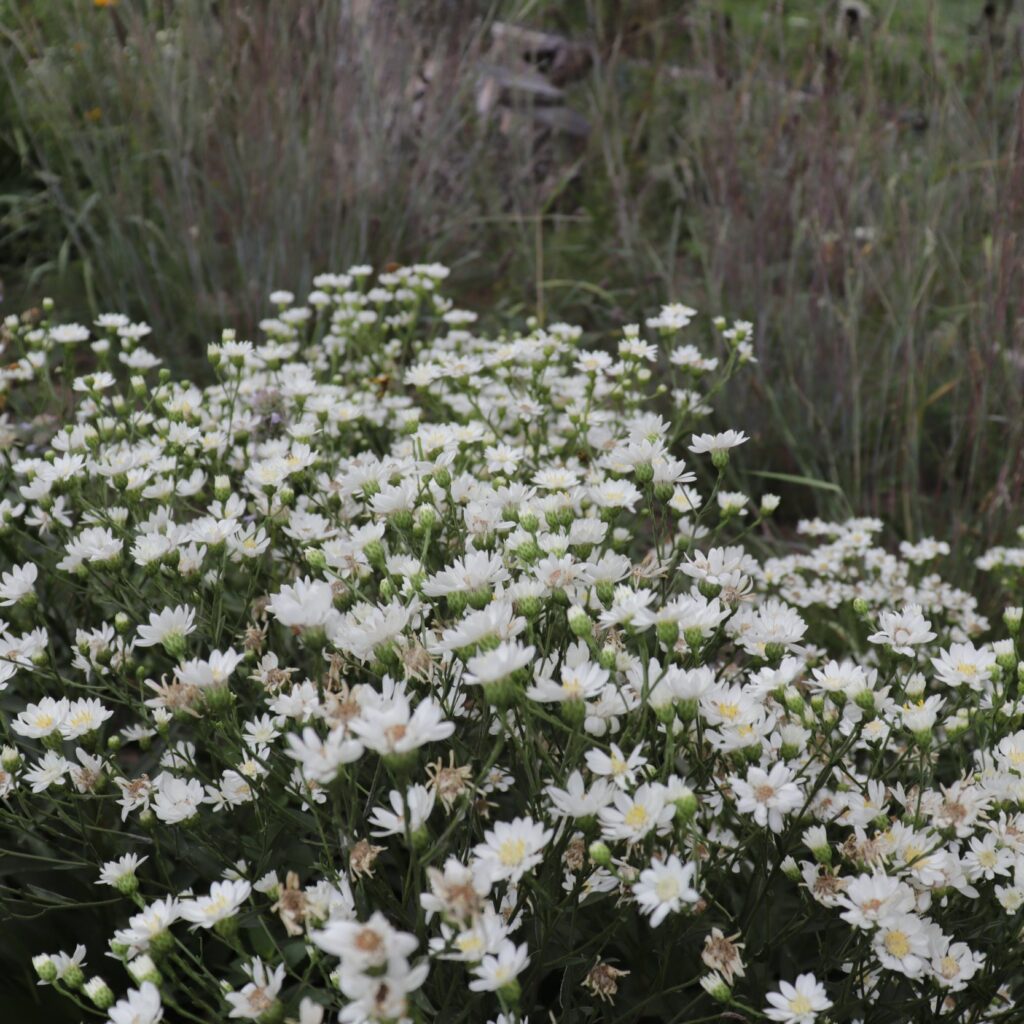
A beautiful and unique member of the goldenrod family, White Goldenrod offers creamy white flowers instead of the typical yellow. While less showy than its golden cousins, it’s just as valuable for pollinators, providing nectar for late-season bees, butterflies, and hoverflies. White Goldenrod grows best in dry to moderately moist soils and prefers full sun to partial shade. Its subtle beauty and pollinator appeal make it an ideal companion plant in native plant or prairie-style gardens.
8. Solidago caesia (Blue-Stemmed Goldenrod)
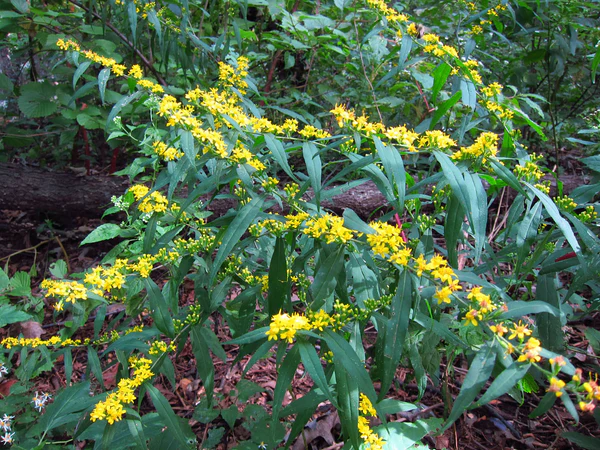
Blue-Stemmed Goldenrod is a woodland-loving species, thriving in partial shade and well-drained soils. Named for its attractive bluish-green stems, this plant produces loose clusters of small golden flowers along its arching stems in late summer and early fall. It’s especially attractive to woodland bees, skippers, and late-season butterflies. Blue-Stemmed Goldenrod is a wonderful addition to shaded garden edges, native woodland gardens, or under deciduous trees where it can brighten up the understory.
9. Solidago missouriensis (Missouri Goldenrod)

A favorite for prairie restorations and drought-tolerant gardens, Missouri Goldenrod is compact and upright, typically reaching 1 to 3 feet in height. It blooms in mid-to-late summer, with its bright golden flower clusters attracting pollinators like native bees, butterflies, and syrphid flies. This goldenrod is highly tolerant of dry, rocky, and sandy soils, making it ideal for xeriscaping and low-water garden designs. Its resilience and pollinator support make it a valuable plant for sustainable landscapes.
10. Solidago uliginosa (Bog Goldenrod)

As its name suggests, Bog Goldenrod thrives in wet, marshy areas, making it a standout option for rain gardens, wetland edges, or areas with poor drainage. It produces dense clusters of rich yellow flowers on upright stems, blooming from late summer into fall. Bog Goldenrod provides nectar for a wide variety of pollinators, including bees, butterflies, and beneficial beetles. Its ability to tolerate both wet and average soil conditions makes it a versatile and ecologically valuable garden addition.



